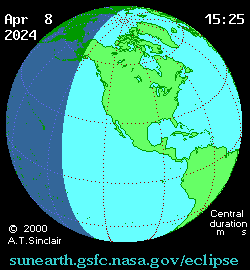Table of Contents
Today’s solar eclipse will be the biggest astronomical event of the decade.
And as millions of people around the world prepare to witness this rare event, experts have revealed the three things you should never do.
This includes looking directly at the sun, as well as purchasing what they claim to be “NASA-approved” eclipse glasses.
‘During the partial phase of the eclipse it is incredibly important [not to look directly] because the sun is still extremely bright,” said Dr. Robert Massey of the Royal Astronomical Society.
“Even when you’re left with a thin crescent, it’s pretty easy to damage your eyes.”
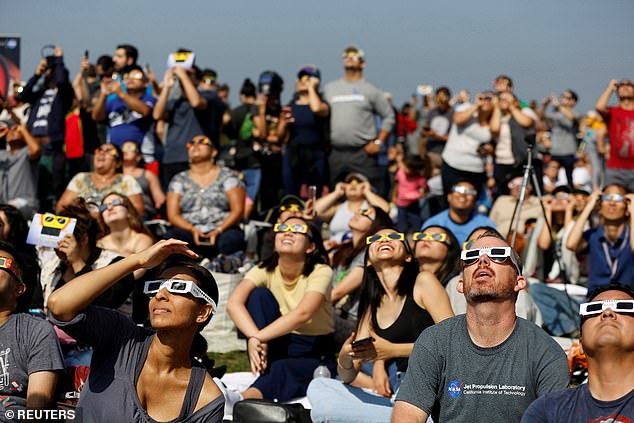
Today’s solar eclipse will be the biggest astronomical event of the decade. And as millions of people around the world prepare to witness this rare event, experts have revealed the three things you should never do.
1. Look directly at the sun
During a solar eclipse, you should never look directly at the sun.
The photosensitive cells that line the inner wall of the eye are very sensitive to intense light and heat generated by the sun.
Direct exposure can kill these cells, which will not grow back naturally in the same way as other cells in the body.
This means that even brief exposure to sunlight can cause permanent damage.
The entire time you are viewing the eclipse you need to view the sun through appropriate safety equipment, including a eclipse viewer, such as a pair of eclipse glasses or a pinhole camera.
You can even use a strainer as a simple pinhole camera, as an image of the sun will be projected through each of the holes.
If you are using binoculars or a telescope, it is absolutely vital that you have a suitable solar filter installed before looking at the sun.
Without a filter, a telescope’s lenses mean you’ll essentially be cooking your eye with a giant magnifying glass.
NASA warned: “Viewing any part of the bright Sun through the lens of a camera, binoculars, or telescope without a special solar filter secured to the front of the optics will instantly cause serious eye injuries.”
If you can’t find a safe way to view the eclipse today, you can always watch the event online via NASA live broadcast.
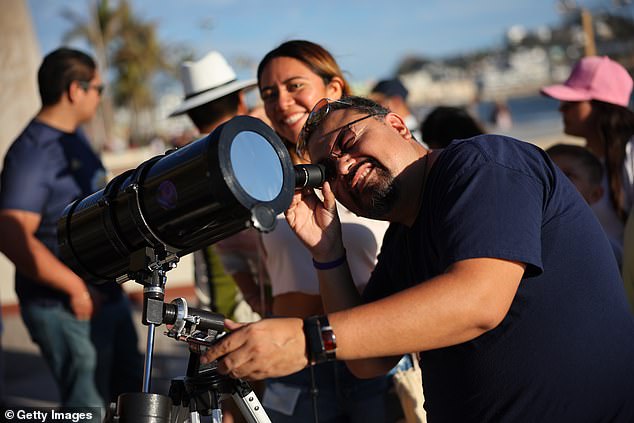

NASA warns that viewing the sun through a telescope without a proper filter like the one in this image will cause instant serious injury. You should never look at the sun without proper safety equipment.
2. Buy ‘NASA-approved’ eclipse glasses
NASA does not approve any specific brand of sun visor, so the NASA brand is a sure sign that your glasses are fake.
Last month, the American Astronomical Society (AAS) warned that counterfeit ellipse solar glasses were flooding the US market.
Many of these viewers fraudulently use the branding of organizations such as the AAS or NASA to appear legitimate.
However, they may not provide you with the proper level of protection and could cause serious eye damage if used.
Rick Fienberg, project director of the AAS Solar Eclipse Task Force, says, “There’s no way to tell by looking at them whether eclipse glasses are really safe, but it’s easy to tell if they’re not.”
If you’re concerned about your eclipse viewers, Feinberg recommends placing them indoors first.
Safe solar visors should be so dark that you can’t see anything around you except perhaps some extremely bright lights.
Mr Feinberg said: “Sunscreens are at least 1,000 times darker than even the darkest normal sunglasses.”
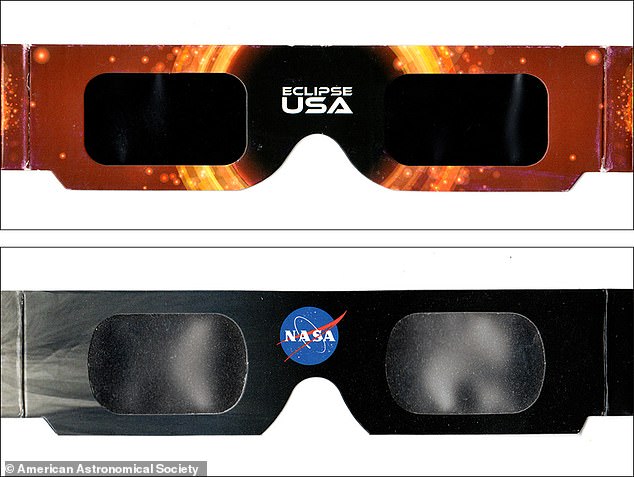

NASA does not approve any solar visors. Any NASA-branded eclipse glasses are definitely fake, like these counterfeit glasses, and should not be used.
If they pass the indoor test, try the glasses outside and look around before looking at the sun.
Again, if the glasses are real you shouldn’t be able to see anything except the faint reflection of the sun on some shiny surfaces.
The AAS also maintains a list of recommended solar safe solar visors that you can consult if you have any questions.
3. Driving
Even for the most attentive drivers, the complete disappearance of the sun will be a major distraction.
As the moon’s shadow sweeps across the Earth, some areas will suddenly be plunged into darkness and the shadows will become strangely distorted.
However, the most dangerous times to be on the road will be in the hours before and after the eclipse.
During the 2017 solar eclipse, fatal traffic accidents increased by about 30 percent in the United States.
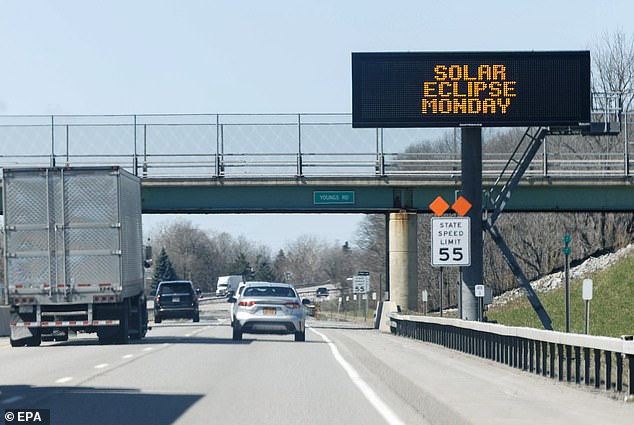

In the hours on either side of the solar eclipse there will be many more people on the road than normal, which will cause more accidents. If you can, avoid driving during today’s eclipse (file photo)
The largest increase was seen in the hour before the eclipse because millions of people left at the same time, representing a 50 percent increase compared to an average day.
In addition to the obvious distraction, people will likely stop on the sides of the road to watch the eclipse as it occurs, adding more obstacles to the road.
At a recent press conference, Jim Free, NASA associate administrator, said, “We want to make sure we’re keeping an eye out for pedestrians, it’s important that we stay focused on everyone around us.”
“People are probably going to stop, so be careful.”
In the hours immediately following the solar eclipse, the roads are also likely to be very congested as eclipse watchers head home, so wait a while to avoid traffic.


